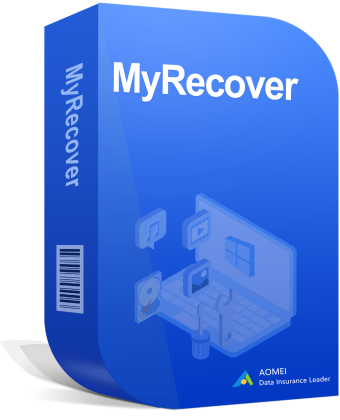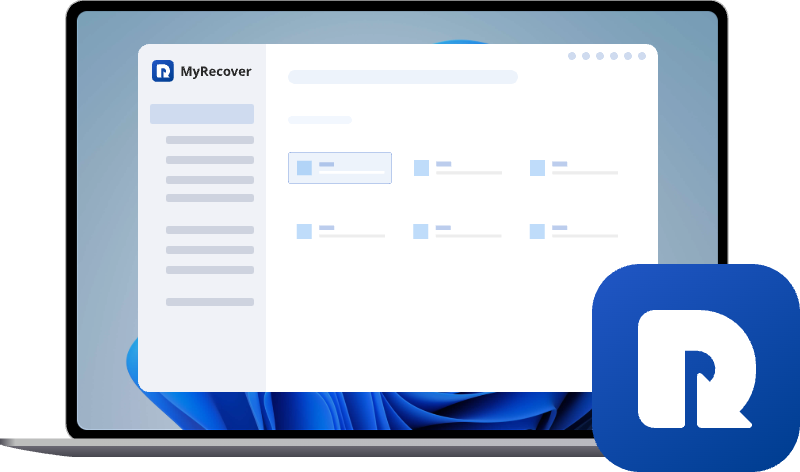Fixed: We Can't Create a Recovery Drive on This PC
This guide details how to fix the "we can't create a recovery drive on this pc" error. We provide step-by-step solutions for this common problem creating recovery drive, including methods for missing file errors and system corruption issues.
"We Can't Create a Recovery Drive on This PC" in Windows 11
Windows 11 Recovery will not create a recovery drive if "Back up system files..." is checked
I tried to create a recovery drive on Windows 11 using a 32GB USB drive, and I even tried up to 128 GB. When I plug the USB drive in, Windows recognizes the drive, but the Recovery App does not, and "Next" is greyed out. You can get some of the files backed up if you uncheck "Back up system files ... ". After what I have found on the Internet, I have concluded that there is a significant software error in the Recovery system that Microsoft knows about but, for some reason, will not fix. Does anyone know how to create a recovery USB that includes system files?
- Question from learn.microsoft.com
You've decided to create a recovery drive to reboot, troubleshoot, and reinstall Windows if required. However, the error message "We can't create a recovery drive on this PC. Some required files are missing". Don't worry, this comprehensive guide will walk you through not only how to fix this vexing issue but also how to safeguard your precious data with a powerful tool like MyRecover.
What Does It Mean "We Can't Create A Recovery Drive on This PC"?
When the "We Can't Create a Recovery Drive on This PC" error shows up, Windows is telling you that its built-in tool for crafting a recovery USB drive has hit a roadblock. The recovery drive creation process involves the system gathering critical boot files, recovery tools, and system image data from a protected partition on your hard drive and copying them onto your removable media. If any link in that chain is broken—be it a corrupted file, a missing component, or a simple hardware hiccup—the entire operation grinds to a halt.
Besides, the problem can be caused by the following reasons:
⭕ Corrupted or Missing System Files. If key system files are corrupted, the recovery drive tool fails because it can't find the necessary files, resulting in the Windows 11 "We can’t create a recovery drive on this PC.Some required files are missing. To troubleshoot problems when your PC can’t start, use your Windows Installation disc or media" error.
⭕ Issues with Windows Recovery Environment(WinRE). The WinRE is the backbone of this entire operation. You can’t create a Windows 11 recovery drive if the WinRE partition itself is damaged, misconfigured, or has been deleted by another disk management tool.
⭕ Conflicts with Third-Party Security Software. Sometimes, some antivirus and anti-malware suites can interpret the recovery drive creation process as suspicious activity. They might block the tool from accessing critical system files or writing to the USB drive, causing the entire operation to fail with a generic message that a problem occurred while creating the recovery drive.
Now that we've identified the likely villains, let's move on to the practical steps you can take to defeat them.
How to Fix "We Can't Create A Recovery Drive on This PC”?
To bridge the gap from understanding the problem to solving it, we'll start with the most straightforward troubleshooting steps that anyone can perform.
Way 1. Check and Format Your USB Drive
Your first port of call should always be the USB drive itself. Ensure it’s at least 32GB (a name-brand), and has the right file system. Format your USB drive if required.
1. Plug the USB drive into a Windows 11/10 computer and open File Explorer.
2. Right-click on the drive and select 'Format'.
3. In the dialog box that appears, set the File system to NTFS and ensure 'Quick Format' is checked.
This will wipe the drive clean and set it up with a file system Windows loves to work with for large operations.
Way 2. Try Another Larger USB Drive
Besides, you can also try another USB drive with a larger capacity, like 64GB or, 128GB. Then check if the problem is solved.
Way 3. Try DiskPart Command
Diskpart is a powerful command-line utility for disk management. It can be used to thoroughly wipe a USB drive, which is more effective than a standard format.
Caution: Please ensure you have selected the correct drive, as this will erase everything on it.
1. Open Command Prompt as an administrator and type diskpart.
2. Then, type list disk to see all connected storage. Identify your USB drive by its size (e.g., Disk 1).
3. Then, type select disk 1 (replace 1 with your disk number).
4. Finally, type clean. This will wipe the drive's partition table.
5. Now choose the USB drive by inputting select partition 1 and active.
6. You can then create a new partition by typing create partition primary.
7. Now format it with format fs=ntfs quick, and assign a letter with assign letter=g.
This gives you a truly clean slate.
Way 4. Ensure Adequate Free Space on Your System Drive
The recovery drive tool pulls data from your main system drive (usually the C: drive). If that drive is crammed to the gills with less than a few gigabytes of free space, the tool might not have the elbow room it needs to temporarily process files.
Do a quick disk cleanup, empty your recycle bin, and uninstall any programs you no longer use. Freeing up 10-15GB of space can sometimes be the magic bullet.
Way 5. Run a Basic System File Check
Windows has a nifty built-in tool called System File Checker (SFC) that acts like a doctor for your OS. It scans for and replaces corrupted system files.
1. To run it, type "cmd" in the Windows search bar, right-click on Command Prompt, and select "Run as administrator".
2. In the black window that opens, type sfc /scannow and hit Enter.
Let it do its thing; it can take a while. If it finds and fixes any integrity violations, you might just have solved your "We can't create a recovery drive on this PC" issue.
Way 6. Perform a DISM Scan to Restore Health
The Deployment Image Servicing and Management (DISM) tool is like SFC's bigger, stronger sibling. It repairs the Windows image that SFC uses to fix files. If the underlying image is corrupt, SFC can't work properly.
1. Run DISM /Online /Cleanup-Image /RestoreHealth in an admin Command Prompt. This command fetches a clean copy of files from Windows Update to repair the local image.
2. After it completes, run sfc /scannow again for a one-two punch that clears up many stubborn system file issues.
Way 7. Follow the Correct Recovery Drive Creation Process
This error is usually related to the option "Back up system files to the recovery drive". Sometimes, creating the recovery drive with this option unchecked first and then recreating it with this option checked may fix the problem.
1. Click on Start, search for the recovery drive, and click on that.
2. In the Recovery Drive wizard, uncheck the "Back up system files to the recovery drive" option and hit Next.
3. Select the USB drive that you intend to use as a recovery drive, and hit Next.
4. Click the Create button to confirm the action. The utility will format the drive and copy the required files to the storage device.
5. Regardless of whether you see an error or the process completes successfully, don’t click the Finish or Close button; click on the back button instead in the upper left corner.
6. Now check the option "Back up system files to the recovery drive", and click on Next.
7. Then follow the instructions to create the recovery drive.
Way 8. Fix WinRE with Windows Installation Disc or Media
If your recovery drive fails because Windows RE is corrupted or missing, follow these steps to restore it.
1. Check WinRE Status
Run Command Prompt as Administrator and enter:
reagentc /info
If the status is "Disabled".Proceed.
2. Try to Enable WinRE
Input the command: reagentc /enable
If this fails with a "file not found" error, the winre.wim file is missing.
3. Restore winre.wim
Open your Windows installation ISO/USB, navigate to \Sources\Install.esd (or Install.wim), using 7-Zip, open the archive, and navigate to 1\Windows\System32\Recovery\. Extract winre.wim to C:\Windows\System32\Recovery\
4. Final Enable WinRE
Run the enable command again: reagentc /enable
This targeted fix is faster than a system repair install and directly resolves the missing file error, preventing recovery drive creation.
Fast Recover Missing Files with MyRecover
If you happen to have missing files without a backup, how can you recover files easily without complex operations? Here comes the powerful Windows data recovery software MyRecover to help.
MyRecover provides the following benefits while recovering files:
- Support all Windows operating systems. You can recover files on Windows 11, 10, 8.1, 8, 7, Vista, XP, and Server 2025, 2022, 2019, 2016, 2012, 2008.
- 500+ devices. You can recover files from HDD, SSD, SD Card, USB flash drive, camera, music player, video player, PS4/5, etc.
- Intuitive interface. MyRecover provides a user-friendly interface to recover files easily, even for a novice.
- Preview files before recovery. Once it finds your missing files, you can preview them to ensure they are intact before recovery, saving time and effort.
- Easy recovery. With the highest recovery rate, 99%, you can recover files from any complex situations, like recovering files from a formatted SSD,recovering files from a RAW partition, etc.
- Quick and deep scan. It provides you with two ways to scan your files: quick scan and deep scan. Deep scan will scan every sector on your hard disk to find every recoverable file.
How to recover missing files on Windows computers with MyRecover? Check the detailed steps below:
1. Please download MyRecover on your computer, install and launch it (Install it on a different drive than the one you're trying to recover from).
2. Tap Deleted Files Recovery, choose the drive where your deleted files are stored before and hit Scan.
3. MyRecover will start with a quick scan. Hit OK when done. You can also try a deep scan to find all missing files.
4. Preview and choose your files and hit Recover. You will be prompted to choose a save location and hit Select Folder.
- Tips:✎...
- Crucially, select a different physical drive or an external USB drive to save the recovered data. Saving them back to the original drive could overwrite other deleted data and complicate the process.
- Once scanned, your files are sorted by file type, and you can easily find your missing files. Moreover, you can filter files quickly by file name, path, and size.
- Try to recover files from unlimited computers? MyRecover Technician is your best shot.

- Recover Deleted Files Easily with Simple Clicks
- 1000+ File Formats Supported
- Support HDD, SSD, External Hard Drive, USB Drive, SD Card, etc.
- Quickly Find Files Using File Types, Name, Size, etc.
- Preview Files Before Recovering
- Recover Unlimited Data
FAQs About Creating A Recovery Drive
Q: Why does Windows keep saying "We can't create a recovery drive on this PC" even with a new USB?
A: A new USB rules out a faulty drive, pointing directly to a system problem. The cause is typically a corrupted Windows Recovery Environment (WinRE) or system files. Start by running the DISM tool to repair the underlying Windows image.
Q: Is it safe to use the Diskpart 'clean' command on my USB drive?
A: It is safe only if you select the correct disk. The command permanently erases all data on the chosen drive without confirmation. Carefully identify your USB by its size when using the list disk command to avoid wiping your main hard drive.
Q: What is the difference between SFC and DISM, and which should I run first?
A: Run DISM first, then SFC. DISM repairs the master Windows image, while SFC fixes individual system files using that image. This sequence ensures both the blueprint and the building blocks are sound.
Q: I'm getting the "some required files are missing" error on Windows 11. What does this mean?
A: This error indicates corrupted or deleted system files, often from the WinRE partition. It's a clear sign to use system repair tools like SFC and DISM to restore these essential components.
Q: Can a Windows Update cause this recovery drive problem?
A: Yes. A faulty update can corrupt system files or WinRE. If the problem appeared after an update, try uninstalling it or rolling back to a previous Windows version, then create your recovery drive before updating again.
Q: After all this, if I still can't create a drive, what is my final option?
A: A "Repair Install" (in-place upgrade) is your last resort. This reinstalls Windows while keeping your files and apps, replacing all system files with clean versions and creating a fresh foundation for recovery drive creation.


